BHA Racing Blog – Key data from the first quarter of 2017 and your questions answered.
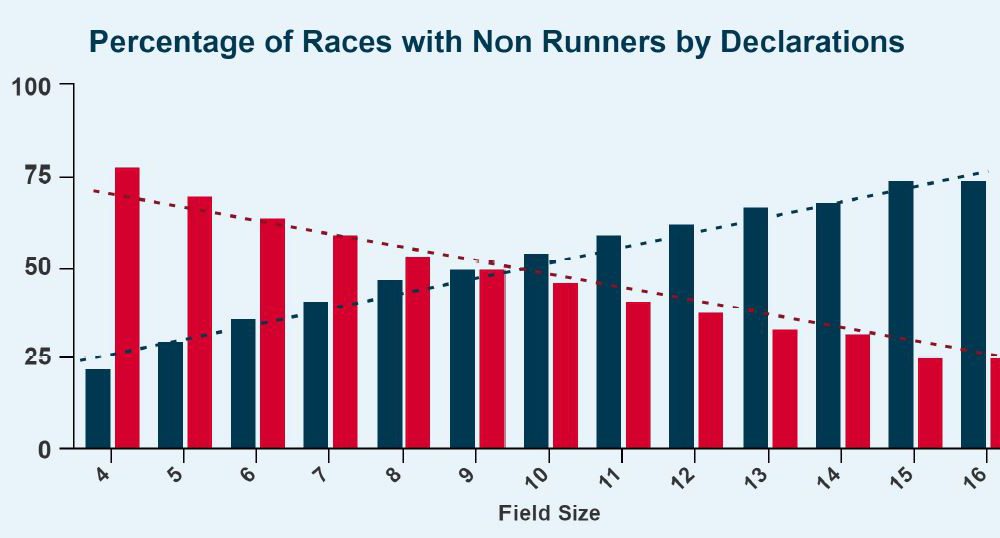
As well as reviewing data from the first quarter, this month’s blog will consider the impact of the addition of a northern all-weather course to the fixture list throughout the core all-weather season. I’ll also be looking at some of the questions we have received via our new [email protected] email address.
Please see here for the data for the first quarter of 2017 and Dashing, our online data dashboard that can be used to access a variety of data relating to the race programme
– BHA Head of Racing Paul Johnson
Owing to the small number of abandoned fixtures, we staged more Jump races in quarter 1 than we have for the previous four years, whilst on the flat the addition of Saturday evening all-weather fixtures throughout the period also led to an increase in the number of races staged.
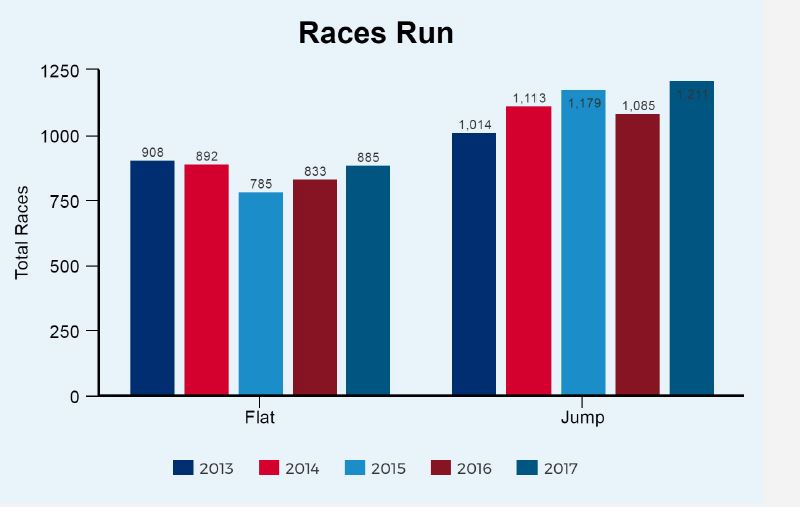
Fig 1 Races run
An increase in the number of races staged clearly has potential to reduce field sizes. Figure 2 below shows that field sizes remained stable despite this increase, and figure 3 below shows nominal growth in the number of Jump horses in training compared to 2016. While it is positive that the recent trend towards decline has been arrested, there is still a great deal of work to be done to promote ownership of jump horses.
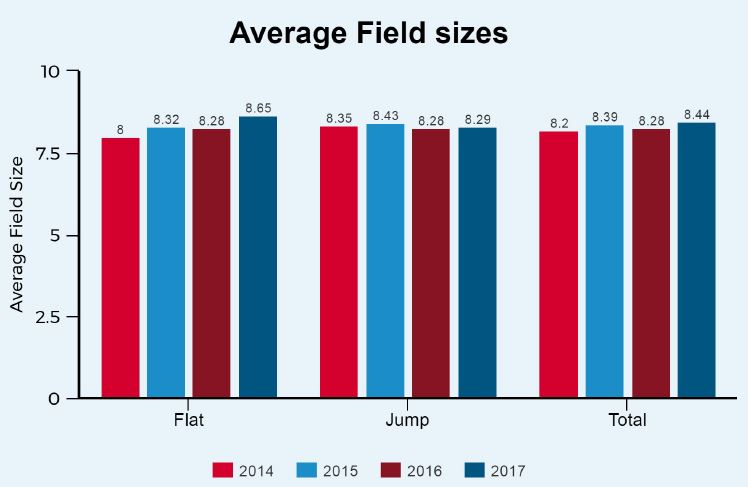
Fig 2 Average field sizes
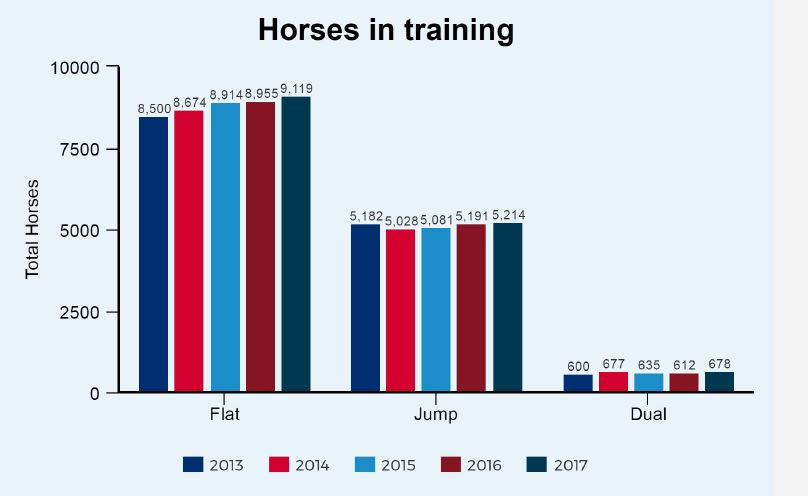
Fig 3 Horses in training
The impact of the all-weather course at Newcastle
Estimates of the demand for a northern all-weather course made ahead of the conversion of Newcastle suggested that around 900 additional runners could be activated each year by providing a suitable local all-weather racecourse. As we have just come to the end of the first core all-weather period it seems like a good time to consider exactly what the impact has been on the sport. Although the immediate, obvious impact will be on the number of all-weather runners, a further decline in the number of flat runners switching codes is something that must also be considered.
The decision to increase the number of all-weather fixtures in 2017 was made on the basis that it was felt that providing a meeting every Saturday evening outside of summer evening period was worthwhile – previously on the busiest day of the week we offered no racing when the afternoon meetings had concluded most weeks. Whilst it was desirable to add these fixtures we had to be mindful of the impact that this could have on field sizes; we had previously restricted the number of races per card in this part of the year (and continue to do so) for this reason and needed to be confident that the addition of 11 meetings would not reverse the positive impact of this. The addition of Newcastle to the all-weather roster and the expected uplift in runners was a significant factor in the decision to add these fixtures rather than seeking alternatives.
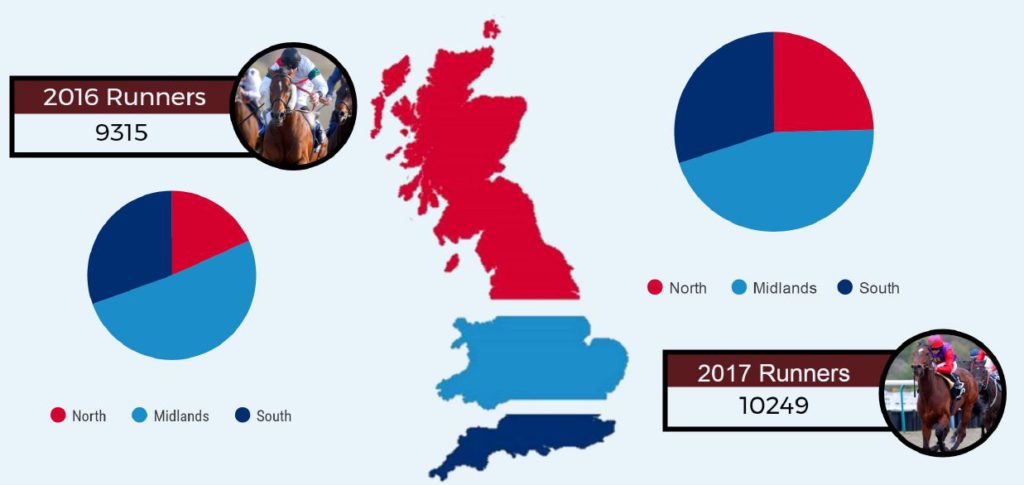
As the above graphic shows, the outcome was in line with estimates with an additional 934 runners taking to the all-weather between November 1st and March 31st. The share of runners provided by the north has increased from 18% to 25%.
This tells a positive story about the impact of the introduction of the all-weather track at Newcastle doing what it was intended to do: provide an option for northern trainers to run through the winter period in a cost-effective way. As highlighted above however, we should also consider the impact of this change on Jump racing.
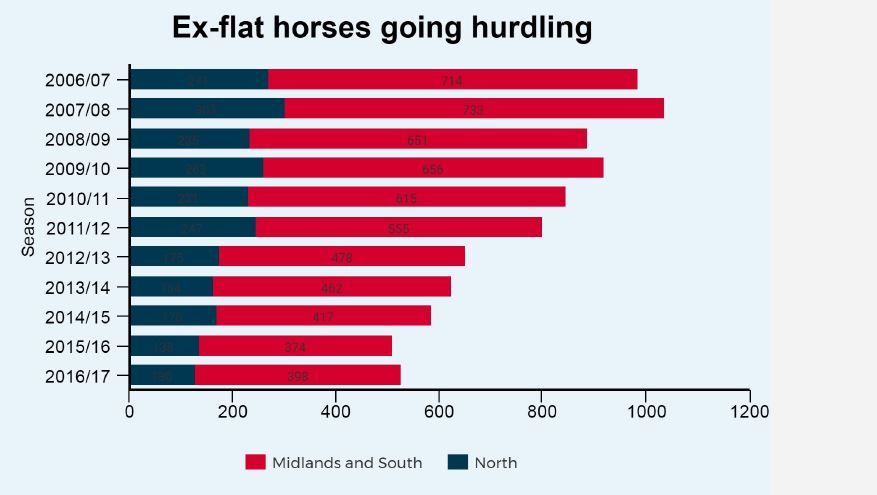
Although the trend since 2006 shows a steady, significant decline in the number of horses switching codes, the impact has been relatively minor so far with just 8 fewer horses from the north switching codes than in the previous year. That said, 2016/17 was the first all-weather season and we would expect more impact. We will continue to monitor this trend alongside the impact of initiatives designed to promote hurdling as a future career for flat horses. These initiatives include the introduction of four high value introductory juvenile hurdles as an early target in November and December and the boosting of prize money in four juvenile handicap hurdles in the spring.
[email protected]
In the last blog I introduced a new email address where questions can be posed to the racing department at the BHA. Although we respond directly to the sender, some questions and answers are worth sharing more widely via this blog.

The race times on Good Friday did feature alternating 5 and 15 minute gaps between three fixtures rather than the usual uniform 10 minute gaps. The reason for this was in order to be able to broadcast on ITV4 from both Lingfield Park and Newcastle with 15 minute gaps between races. Although this did cause race times to look a little strange overall, the importance of providing a balanced programme to the TV audience took precedence.

The full rules governing the elimination sequence from races are available on the BHA website and can be found by following this link:
http://rules.britishhorseracing.dev/Orders-and-rules&staticID=126770&depth=3
In the case of the Supreme Novices section 4 applies.
Consistent with all races, the aim is to eliminate horses on the basis of their ability levels. The short summary of the rule is that those horses that, in the opinion of the BHA handicapper have the lowest rating will be eliminated first. Due to the inexperience of a number of the participants in a race like the Supreme Novices it is necessary in some cases for the handicapper to make an assessment of ability akin to a handicap rating but used purely for the purposes of elimination. In all cases horses with no previous runs will be eliminated first. Horses which are deemed to have an equal level of ability by the handicapper will be split by a independently conducted ballot if necessary.
Other approaches have been suggested to this such as providing preference to previous winners over those that have not won. The obvious downside to this is that if we did need to eliminate, the winner of a poor race may be favoured over a horse that has finished second in a better race. On balance we think that our approach ensures that the best field is assembled on the day.

This week is one that we are aware is disappointing to many, as following the fanfare of the start of the flat at Doncaster there is a real shortage of flat turf meetings.
The challenge here is that this early in the flat season many racecourses are concerned about staging turf fixtures on likely poor going for fear of putting later fixtures at risk. For this reason even going back as far as 2004 (before the conversion of Kempton Park to all-weather) we can see that the week was light on turf fixtures. In the intervening years a number of factors have contributed to a further reduction in turf fixtures in this period. Of the six fixtures shown below that took place in 2004, three take place at either Newcastle or Folkestone, venues that no longer offer turf racing and the allure of racing in improved conditions has seen other racecourses move fixtures out of this period.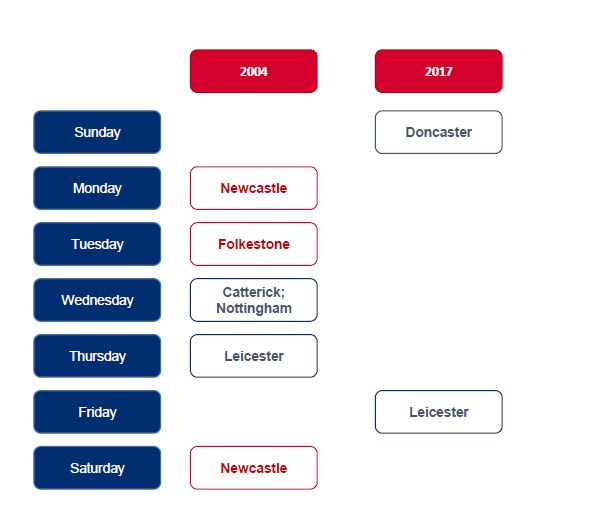
As a consequence we have a relatively unappealing week whilst we wait for the turf to get properly started.
For this reason the industry has continued to offer funding incentives in recent years to flat turf fixtures that take place in early April despite pressure on the amount of available funds to do so. The introduction of the Racing Authority and the requirement for bookmakers taking bets through remote platforms to contribute to the sport has provided an opportunity to improve these incentives. We will be discussing the detail of this with racecourses in the coming weeks and it is our hope that this will encourage them to give greater consideration to staging fixtures in early April in future years.

Having reviewed the last five years of races there is no evidence that 16 runner races see an above average number of non-runners relative to other races. This can be seen in the below chart which shows the percentage of races with non-runners by declaration level over the period. In this chart the blue bars show the percentage of races that arrive at their field size with non-runners and the red shows those that arrive there without non-runners. The data suggests that there is no bias towards non-runners in races with field sizes where the presence of non-runners would alter the number of places for betting purposes.
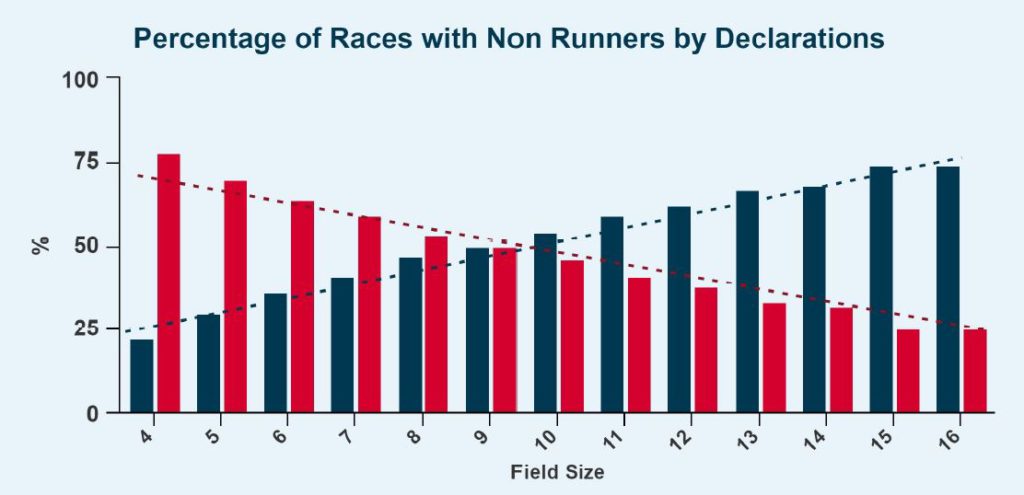
Please feel free to direct any race planning questions you may have to the Racing Department via [email protected].
